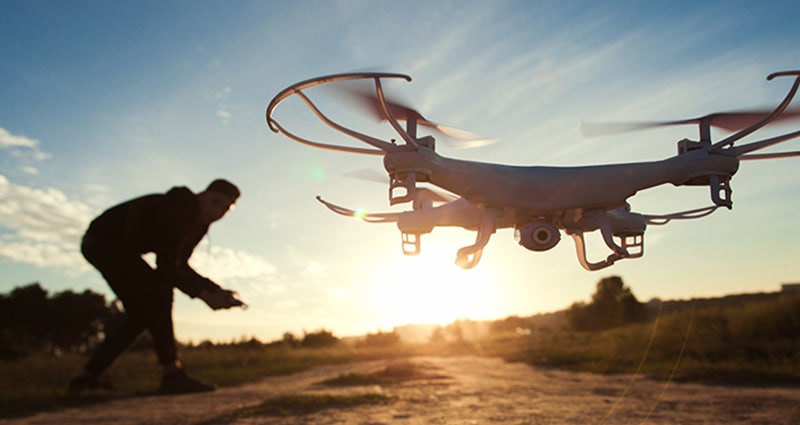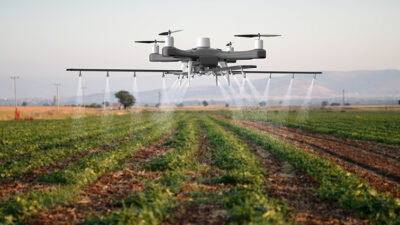The 5 Essential Steps of UAS Site Assessments

Most often, the crucial moment for avoiding an accident in aviation—whether you’re the pilot of a manned craft or an unmanned aerial vehicle (UAV)—is not when you’re airborne, but when you’re conducting pre-flight planning. Understanding potential risks, anticipating their impact on your flight plan, and choosing to not fly when risks can’t be properly mitigated are hallmarks of the best pilots. Research conducted by Aircraft Owners and Pilots Association (AOPA) shows that over 70% of general aviation accidents each year are a result of pilot error. Keeping yourself educated about proper site assessment and the common UAV hazards is essential for growing as a pilot and keeping yourself off the National Transportation Safety Board’s radar. These five steps can provide you with the knowledge you need to conduct successful UAS missions and access a free online Site Assessment Course to learn more.
1. Prepare for your flight
Before you take your UAV out into the field, get a clear picture of your goals for your flight. Even if you’re flying to take photographs for fun, ensure you’ve thought through your main areas of interest and what you will need to accomplish for you to call the mission a success. Check to ensure you know which airspace you will be flying in, the maximum height you can reach, and the possible hazards. Satellite imagery of your flight area will be invaluable for identifying manmade or natural obstructions.
2. Complete a general assessment
Next, use a reliable weather app or website to get a complete picture of the climatic factors that could impact your flight, including precipitation patterns, wind speed, and wind direction. As your ability to move your hands and see your UAV will impact your flight, make sure that you have the proper clothing and eye gear for conditions.
Another component of the general assessment are the areas you will use to take off and land. These should be in an open area, away from overhead obstructions, roads, or bystanders. Open fields or parking lots are often the best zones for these purposes. You should also note alternate emergency landing zones.
3. Identify potential hazards
Every mission site will have at least a few hazards that could impact a drone flight. Some of
the most common types of hazards pilots encounter are:
- Overhead obstructions: Powerlines, branches, or parts of large structures are examples.
- Terrain variations: Hills and outcroppings can cause a pilot to go above the FAA-mandated 400 feet above ground level (AGL). Take care to note where you will need to descend beforehand.
- Bodies of water: Water absorbs heat, which can confuse UAV sensors. You will want to turn these sensors off if you’re flying within 50 feet AGL of water.
- Birds and animals: If you’re in an area with birds, especially nesting areas, plan to avoid them and ascend if you encounter a flock. As the lead bird in a flock will be the highest in elevation, aim for higher than this bird in cases where you must cross their path.
- Manmade or natural structures: Any structure over 10 feet tall can cause low-level turbulence and present a collision hazard. Note them beforehand to lower your risk.
- Broadcasting equipment, transmission power lines, or residential Wi-Fi: These hazards can cause interference, which can cause UAVs to behave erratically. Avoid these interference hazards and set your drone to broadcast in 5.8 GHz if there are Wi-Fi signals nearby.
4. Finalize your flight plan
To bring your site assessment to a close, review the information you’ve gathered and think through the most pressing hazards you’ve identified. When determining the altitude for your return to home (RTH) point, take the tallest obstacle in the area above the takeoff location and add 50 feet to that value. Because FAA regulations stipulate that you can fly 400 feet above the tallest structure in your vicinity, a proper RTH altitude will ensure you can’t collide with it if the drone initiates a return to home. At this stage, also complete all aircraft function control checks.
5. Verify the assessment after take off
Even if you’re 100% confident about your flight plan, you should continually assess once you’ve arrived at the mission site and maintain situational awareness. Although using your head can take you far, if your gut is telling you that something about the weather or terrain is unsafe, take your intuition into account.
In summary, site assessments are a large portion of overall flight safety and are key components of overall pilot merit. The best hazard avoidance is anticipatory, so the value of planning ahead and doing a thorough site assessment can’t be overstated.

DARTdrones, the nation’s leading drone training company and Global Aerospace SM4 partner, offers courses in 40+ cities across the U.S. DARTdrones offers basic flight training classes, Part 107 Airman Knowledge test prep courses, advanced industry specific training, and UAS program implementation consulting services. DARTdrones has been helping individuals and organizations develop safe and efficient sUAS programs and continues to keep new and developing safety considerations at the forefront of their curriculum development. For more information, visit us or call the team at 800-264-3907.
http://www.dartdrones.com
© 2025 DARTdrones. All Rights Reserved.
Next ArticleRelated Posts

Part 108: The Next Step in BVLOS Integration and Drone Innovation
As the drone industry awaits the Federal Aviation Administration’s (FAA) forthcoming Part 108 regulations, the landscape of Beyond Visual Line of Sight (BVLOS) operations stands on the brink of transformation. These anticipated rules aim to standardize BVLOS flights, enabling more complex and expansive drone missions across various sectors.

The Dawn of Drone Agriculture: Navigating the Skies of Modern Farming
In the past decade, the agricultural industry has seen a significant technological revolution, with the advent of drones, also known as Unmanned Aerial Vehicles (UAVs), being one of the most transformative. These high-flying tools have revolutionized the way farmers and agronomists approach crop management, pest control and land analysis.

